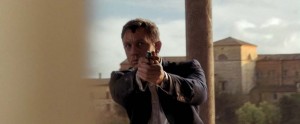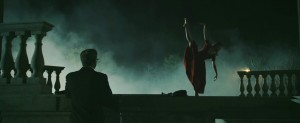Jordan’s anti- anti-CGI rant
Wednesday, January 4th, 2012 • Horrorthon Posts




This isn’t specifically directed at anyone on Horrorthon, but the topic does come up here, so I figured it’s an appropriate place for this rant. I just finished watching the Coen brothers’ True Grit (which had me bawling like a baby) and thought it was maybe the most perfect Western I’ve ever seen. While watching the end titles I saw a credit for the digital effects house Luma Pictures (whom I’d actually heard of because of their work on a couple of the Marvel superhero movies). I thought back over the movie and tried to guess what they’d done, and my guesses were correct (all the falling snow, and the extension of the Arkansas town in the top image above).
I’m so tired of reading and hearing people complain about CGI in movies, when (in my opinion) CGI is the best thing to happen to cinema since Technicolor, or maybe even sound. The complaints are universally based on a willfully ignorant point of view and a nonsensical argument.
Pre-digital special effects, almost without exception, look like special effects. They’re nearly impossible to miss. The matte paintings of depression-era Chicago in The Sting; the model London rooftops in Murder by Decree; the tilted “out-the-window” backdrops in countless movies: they all look fake. You accept the fakeness; it’s part of the “magic of movies.”
But CGI changes all that. The four images above are the afforementioned True Grit (in which the long main street of the town is not a static image at all; it’s glimpsed in the background of a dozen sweeping shots with people and horses moving in the foreground); Saving Private Ryan (where the Allied fleet off the coast of Normandy, including battleships and dirigibles, is made to match exactly to actual D-Day photographs); Quantum of Solace (which is filled with undetectable CGI like this bell-tower shootout in Siena) and The Curious Case of Benjamin Button (in which Cate Blanchett’s head is attached to a real ballet dancer’s body). All flawless, all undetectable, all expedient, showing you things you could never see without twenty times the budget (which is why something like Heaven’s Gate was so expensive; Michael Cimino had to build the town of Casper, Wyoming circa 1890).
The only time people realize they’re seeing CGI is when the image depicts something clearly impossible (like Asgard, or the starship Enterprise, or Iron Man flying around). Suddenly the audience realizes that it’s got to be a trick, and they say, “Oh—CGI.” And then they complain about what they’re seeing as if the CGI itself is to blame (rather than the creative decisions that went into determining what the shots would look like). Everyone starts bitching about how CGI intrinsically “looks fake,” so why can’t they do it the old way (where, as I’ve said, you can’t possibly miss the effects shots; they stand out like a sore thumb even before anything happens in them because the film’s been fed through an optical printer and has lost its first-generation crispness). It’s bad logic and lazy thinking. If a little light came on next to the screen every time a digital effect was in use, people would realize how unbelievably great CGI is and would stop bitching. But this doesn’t happen, so people stare at dozens and dozens of wonderful, difficult, artistic (and cost-saving!) CGI effects, not even realizing it, and then say they “hate” CGI. I wish people would wise up, that’s all I’m saying. (I just had to vent.)